The Fox Film Corporation was an American company that produced motion pictures, formed by William Fox on February 1, 1915. It was the corporate successor to his earlier Greater New York Film Rental Company and Box Office Attractions Film Company.

A newsreel is a form of short documentary film, containing news stories and items of topical interest, that was prevalent between the 1910s and the mid 1970s. Typically presented in a cinema, newsreels were a source of current affairs, information, and entertainment for millions of moviegoers. Newsreels were typically exhibited preceding a feature film, but there were also dedicated newsreel theaters in many major cities in the 1930s and ’40s, and some large city cinemas also included a smaller theaterette where newsreels were screened continuously throughout the day.

The Essanay Film Manufacturing Company was an early American motion picture studio. The studio was founded in 1907 and based in Chicago, and later had an additional film lot in Niles Canyon, California. Its stars included Francis X. Bushman, Gloria Swanson and studio co-owner, actor and director, Broncho Billy Anderson. It is probably best known today for its series of Charlie Chaplin comedies. In the 1920s, after it merged with other studios, it was absorbed into Warner Bros.
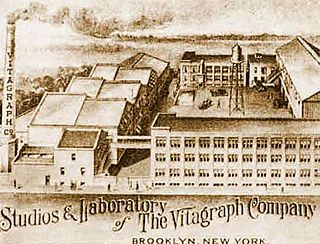
Vitagraph Studios, also known as the Vitagraph Company of America, was a United States motion picture studio. It was founded by J. Stuart Blackton and Albert E. Smith in 1897 in Brooklyn, New York, as the American Vitagraph Company. By 1907, it was the most prolific American film production company, producing many famous silent films. It was bought by Warner Bros. in 1925.
Animated films in the United States date back to at least 1906 when Vitagraph released Humorous Phases of Funny Faces. Although early animations were rudimentary they rapidly became more sophisticated with such classics as Gertie the Dinosaur in 1914, Felix the Cat, and Koko the Clown.
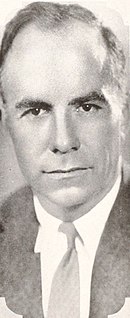
Gregory La Cava was an American film director of Italian descent best known for his films of the 1930s, including My Man Godfrey and Stage Door, which earned him nominations for Academy Award for Best Director.
A short film is any motion picture that is short enough in running time not to be considered a feature film. The Academy of Motion Picture Arts and Sciences defines a short film as "an original motion picture that has a running time of 40 minutes or less, including all credits". In the United States, short films were generally termed short subjects from the 1920s into the 1970s when confined to two 35mm reels or less, and featurettes for a film of three or four reels. "Short" was an abbreviation for either term.

William Fox was a Hungarian-American motion picture executive who founded the Fox Film Corporation in 1915 and the Fox West Coast Theatres chain in the 1920s. Although he lost control of his movie businesses in 1930, his name was used by 20th Century Fox and continues to be used in the trademarks of the present-day Fox Corporation, including the Fox Broadcasting Company, Fox News, and Fox Sports.

Bray Productions was the dominant animation studio based in the United States during the years of World War I.
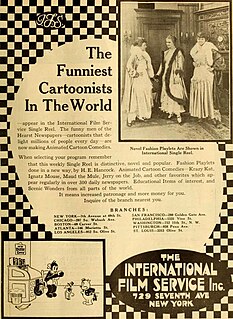
International Film Service (IFS) was an American animation studio created to exploit the popularity of the comic strips controlled by William Randolph Hearst.

John Bunny was an American actor. Bunny began his career as a stage actor, but transitioned to a film career after joining Vitagraph Studios around 1910. At Vitagraph, Bunny made over 150 short films – many of them domestic comedies with the comedian Flora Finch – and became one of the most well-known actors of his era.

William Nicholas Selig was a pioneer of the American motion picture industry. In 1896 he created one of the first film production companies, Selig Polyscope Company of Chicago. Selig claimed to have made the first narrative film shot in Los Angeles, The Count of Monte Cristo, and, in 1909, what may have been the first permanent L.A. studio, in Edendale, Los Angeles, and being the first U.S. company to shoot a two-reel film, Damon and Pythias (1908), and the first true serial (film), The Adventures of Kathlyn (1913-1914).
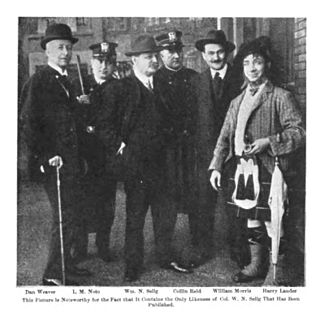
The Selig Polyscope Company was an American motion picture company that was founded in 1896 by William Selig in Chicago. The company produced hundreds of early, widely distributed commercial moving pictures, including the first films starring Tom Mix, Harold Lloyd, Colleen Moore, and Roscoe "Fatty" Arbuckle. Selig Polyscope also established Southern California's first permanent movie studio, in the historic Edendale district of Los Angeles. Ending film production in 1918, the business, based on its film production animals, became an animal and prop supplier to other studios and a zoo and amusement park attraction in East Los Angeles until the Great Depression in the 1930s.
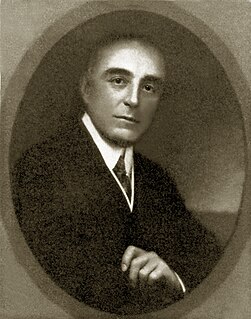
Pierre Ernest Jules Brulatour was a pioneering executive figure in American silent cinema. Beginning as American distribution representative for Lumiere Brothers raw film stock in 1907, he joined producer Carl Laemmle in forming the Motion Picture Distributing and Sales Company in 1909, effectively weakening the stronghold of the Motion Picture Patents Company, headed by Thomas Edison, a large trust company that was then monopolizing the American film industry through contracts with hand-picked, established studios. By 1911 Brulatour was president of the Sales Company. He was a founder of the Universal Film Manufacturing Company, later known as Universal Pictures.

Paul Houlton Terry was an American cartoonist, screenwriter, film director and producer. He produced over 1,300 cartoons between 1915 and 1956 including the many Terrytoons cartoons. His studio's most famous character is Mighty Mouse, and also created Heckle and Jeckle, Gandy Goose and Dinky Duck.

Saved from the Titanic is a 1912 American silent motion picture short starring Dorothy Gibson, an American film actress who survived the sinking of the RMS Titanic on April 15, 1912. Premiering in the United States just 31 days after the event, it is the earliest dramatization of the tragedy.

The Sinking of the Lusitania (1918) is an American silent animated short film by cartoonist Winsor McCay. It is a work of propaganda re-creating the never-photographed 1915 sinking of the British liner RMS Lusitania. At twelve minutes it has been called the longest work of animation at the time of its release. The film is the earliest surviving animated documentary and serious, dramatic work of animation. The National Film Registry selected it for preservation in 2017.

St. Elmo is a 1914 American silent drama film produced by the Balboa Amusement Producing Company and distributed by William Fox's Box Office Attractions Company. It was the first feature-length film adaptation of Augusta Jane Evans's 1866 novel of the same name. The story follows the life of the title character, who kills his cousin over the love of Agnes, falls from grace, and eventually finds redemption and love with Edna. It is disputed who directed the film; many sources credit Bertram Bracken, while others list St. Elmo as J. Gordon Edwards's directorial debut.
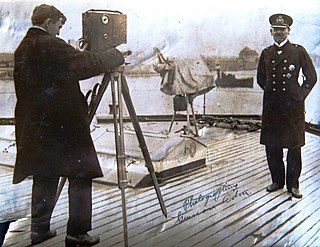
Nelson Elisha Edwards (1887-1954) was one of the first newsreel cameramen in American film history. From 1914 he filmed for Hearst’s International News Service. Edwards filmed the Turkish and German side of World War I.